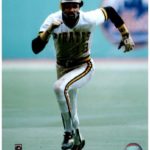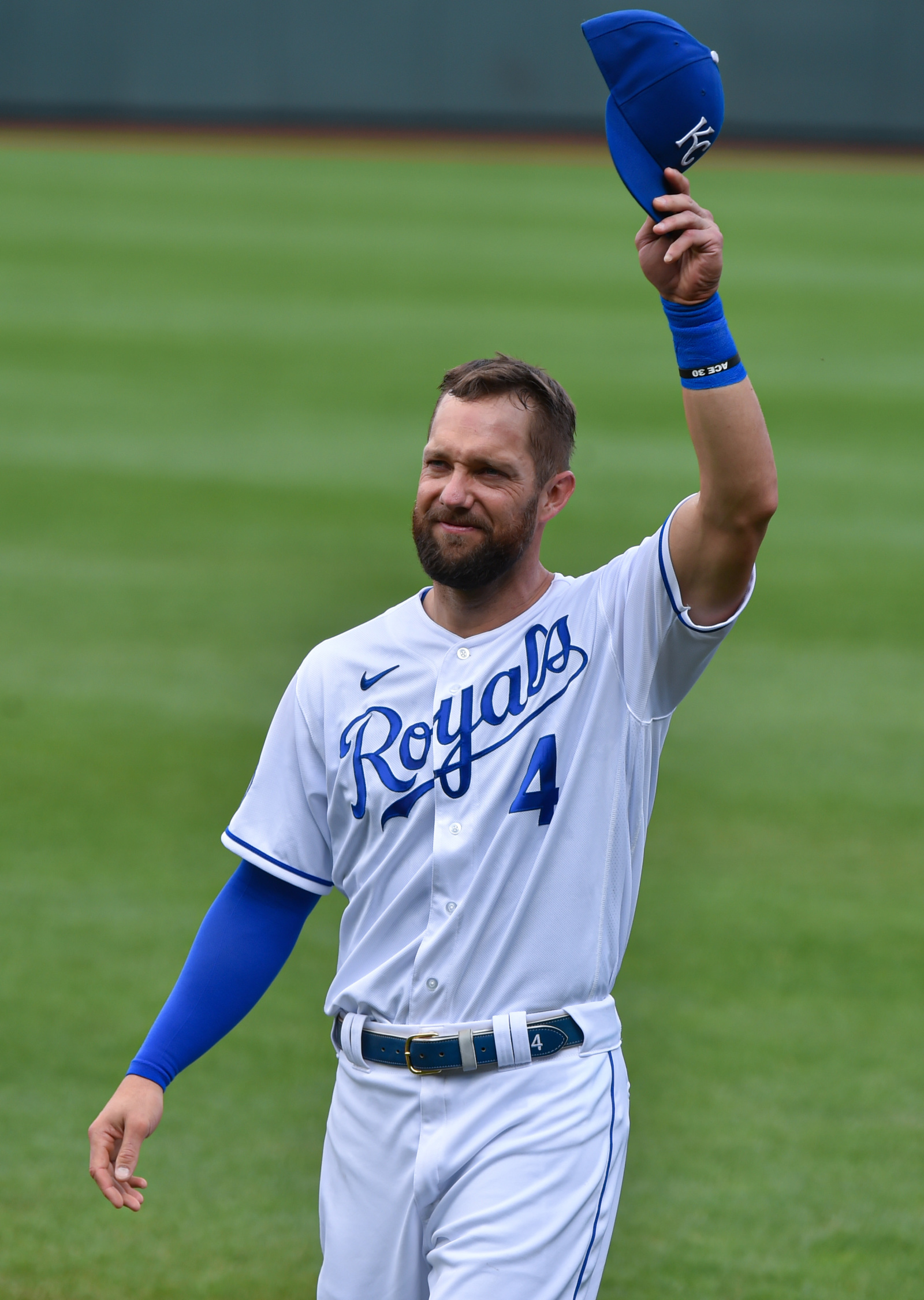Omar Moreno
Positions: Outfield
Bats: Left Throws: Left
Height: 6′-2″ Weight: 180
Born: Friday, October 24, 1952 in Puerto Armuelles, Chiriqui Panama
Debut: September 6, 1975
Last Game: October 5, 1986
Full Name: Omar Renan Moreno
Notable Events and Chronology for Omar Moreno Career
There were never any doubts Omar Moreno could run. Signed as a 16-year-old in 1969, the lefthanded Panamanian was long-legged and moved at a fast gallop on the bases and in the outfield. There were some questions whether or not he would hit major league pitching and injuries slowed some of his progress in the minors, but a healthy Moreno was seen as a potential base-stealing champion and gold glove outfielder. In the minors, Moreno stole 39 bases in 1972, and led two minor leagues in stolen bases with totals of 77 and 67 the next two years. In 1975, Moreno swiped 39 more for AAA Charleston, earning a cup of coffee in Pittsburgh at the end of the year. In 1976, Moreno was hitting .315 with 55 stolen bases when the club recalled him for a second time that year. He hit a respectable .270 while stealing 15 bases in 48 games, primarily while filling in for Al Oliver who was sidelined with an inner ear infection.
With Chuck Tanner, a manager who loved the running game, taking over as the Pirates’ boss in 1977 and Richie Zisk having been traded to the White Sox, Oliver was moved to leftfield to make room for the player soon to beknown in Pittsburgh as “The Antelope.” Tanner placed Moreno in the number two spot of the lineup and while Moreno provided range in centerfield not seen in Pittsburgh since the days of Bill Virdon and he stole 53 bases to finish fourth in the National League, his batting average was a disappointing .240, including just a .229 mark against righthanders. Moreno had more difficulty hitting the next season, even though Tanner had flipped flopped him in the batting order with former leadoff man Frank Taveras. His average fell another five points and his slugging average dropped over 50 notches, yet he was more patient at the plate and increased his stolen bases to a league leading 71, breaking Taveras’s team record set the year before.
With dreams of how many bases Moreno could steal if he hit for a better average, the Pirates hired Harry Walker, the team’s former manager and one of the game’s foremost authorities on hitting. During the 1960’s Walker had turned Matty Alou, a player with similar offensive attributes into a batting champion and consistent .300 hitter. While Moreno had had some good years in the minors, he always had a relatively high strikeout total and had fanned over 100 times in both 1977 and 1978. Walker’s work with Moreno paid early dividends in 1979, particularly in the first half of the season when he hit .305. At that point, some were calling Moreno the team’s most valuable player.
Omar’s hitting fell off the second half of the season, but he finished the year at .282 and continued to run down drives in the outfield to help his teammates out of countless jams. He also captured his second stolen base title with 77 and in September nabbed 13 bases in a row without being caught. Moreno’s best year saw him set career highs in runs (110), hits (196), doubles(21) and despite being tutored by Walker to hit the ball on the ground and slice it to the opposite field, homeruns (8). Most impressive, Moreno more than doubled his rbi output from 33 to 69. His improved offense, coupled with his outstanding defensive play kept him in the lineup everyday during the season and Moreno led the league with 695 at bats. His runs scored total was topped only by the Cardinals’ Keith Hernandez.
In the playoffs, Moreno hit .250, but scored three runs in the three game series. Moreno overcame a 1-for-10 start and cynics who began to call him “Omar the Outmaker” for stranding runners on base in the first two World Series games by hitting .435 (10-for-23) over the final five games to ignite the Pirates’ comeback.
Moreno stole an incredible 96 bases in 1980, but even more amazingly did not lead the National League in this category for a third strait year, losing the title to the Expos’ Ron LeFlore by a single steal. Moreno did finish in atie with another Expo, Rodney Scott for the league lead in triples with 13, but his average slipped back under .250 and for the fourth strait year, he struck out over 100 times. Moreno’s stolen base total that season moved him into third place on the all-time Pirate list behind Max Carey and Honus Wagner. He still retains the number three spot in Pirate history and his 96 single season steals remains the club record. Moreno also set a negative club record in 1980, with 33 caught stealings. Once again, Tanner decided he could not keep Moreno out of a whole game as his defense was as important, perhaps more so, than his offense. The Pirate manager, when periodically asked about Moreno’s slumps, would simply say, “I don’t care if he hits .200, he is my centerfielder.”
Moreno increased his average to .276 during the strike shortened 1981 season and with a third of baseball’s schedule wiped out, Moreno avoided another 100 strikeout year. He stole 39 bases, which again was second in the league, but far behind the Expos’ Tim Raines’ 71. Although he again played every game, one matter of concern about Moreno’s defense started to emerge. His arm, never one of the best in the league, seemed to lose some of its power and opposing baserunners started to take more chances on his throwing.
In 1982, Tanner finally allowed Moreno a few days off, but he appeared in 158 games. Moreno’s average fell to .245, however, and he walked just 44 times. Although he stole 60 bases in a high-powered lineup, his on base percentage had many questioning if he should continue to be the team’s leadoff hitter. Tanner occasionally hit him eighth against lefthanded pitching and Moreno’s strikeouts jumped to a career high 121. Apparently, though Tanner and GM Pete Peterson felt Moreno would return to being close to his 1979 or at least his 1981 performance and sought to re-sign him after he filed for free agency. Moreno, still only 29, instead signed with the Houston Astros, accepting a multi-year deal. The Pirates had trouble replacing Moreno, but it soon became obvious to the Astros and Yankees, where Moreno was dealt in 1983, that he was losing more of his abilities. He played the last three years of his career moving from New York to Kansas City to Atlanta as a utility outfielder.
While Moreno never did become “the next Max Carey,” he did provide Pittsburghers with thrilling baserunning and defense during the 6+ years he held the centerfield job in Three Rivers Stadium, three times establishing new team records for stolen bases and he will be remembered with such names as Leach, Carey, Virdon and Oliver as the starting centefielder on a Pirate World Championship Team.
@ET-DC@eyJkeW5hbWljIjp0cnVlLCJjb250ZW50IjoicG9zdF90YWdzIiwic2V0dGluZ3MiOnsiYmVmb3JlIjoiTGVhcm4gTW9yZSBhYm91dCB0aGUgdGVhbXMsIHBsYXllcnMsIGJhbGwgcGFya3MgYW5kIGV2ZW50cyB0aGF0IGhhcHBlbmVkIG9uIHRoaXMgZGF0ZSBpbiBoaXN0b3J5IGp1c3QgY2xpY2sgdGhlIHRhZ3MhICAiLCJhZnRlciI6IiIsImxpbmtfdG9fdGVybV9wYWdlIjoib24iLCJzZXBhcmF0b3IiOiIgfCAiLCJjYXRlZ29yeV90eXBlIjoicG9zdF90YWcifX0=@






